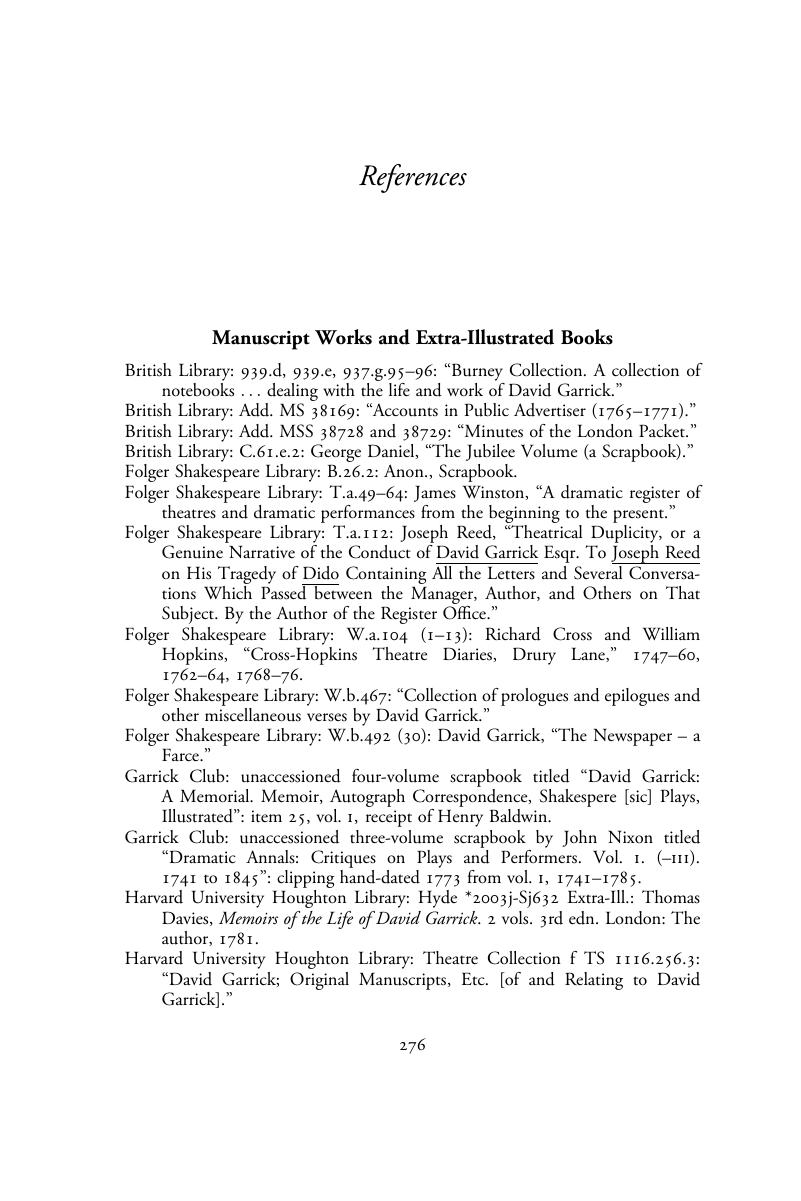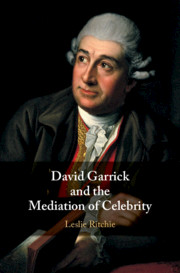Book contents
- David Garrick and the Mediation of Celebrity
- David Garrick and the Mediation of Celebrity
- Copyright page
- Contents
- Figures
- Tables
- Acknowledgements
- Introduction
- Chapter 1 A View of London’s Mediascape, circa 1741–1776
- Chapter 2 Proofs: Garrick’s Involvement in the Mediascape
- Chapter 3 Advertising and Brand Garrick: “Infinite Variety”
- Chapter 4 A Short History of Negative Publicity
- Chapter 5 Prompting, Inside and Outside the Theatre
- Conclusion: Garrick, Re-Collected
- Notes
- References
- Index
- References
References
Published online by Cambridge University Press: 04 January 2019
- David Garrick and the Mediation of Celebrity
- David Garrick and the Mediation of Celebrity
- Copyright page
- Contents
- Figures
- Tables
- Acknowledgements
- Introduction
- Chapter 1 A View of London’s Mediascape, circa 1741–1776
- Chapter 2 Proofs: Garrick’s Involvement in the Mediascape
- Chapter 3 Advertising and Brand Garrick: “Infinite Variety”
- Chapter 4 A Short History of Negative Publicity
- Chapter 5 Prompting, Inside and Outside the Theatre
- Conclusion: Garrick, Re-Collected
- Notes
- References
- Index
- References
Summary

- Type
- Chapter
- Information
- David Garrick and the Mediation of Celebrity , pp. 276 - 293Publisher: Cambridge University PressPrint publication year: 2019

